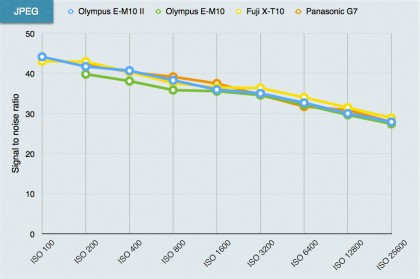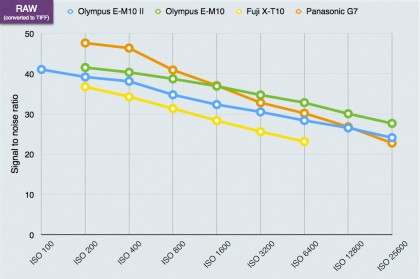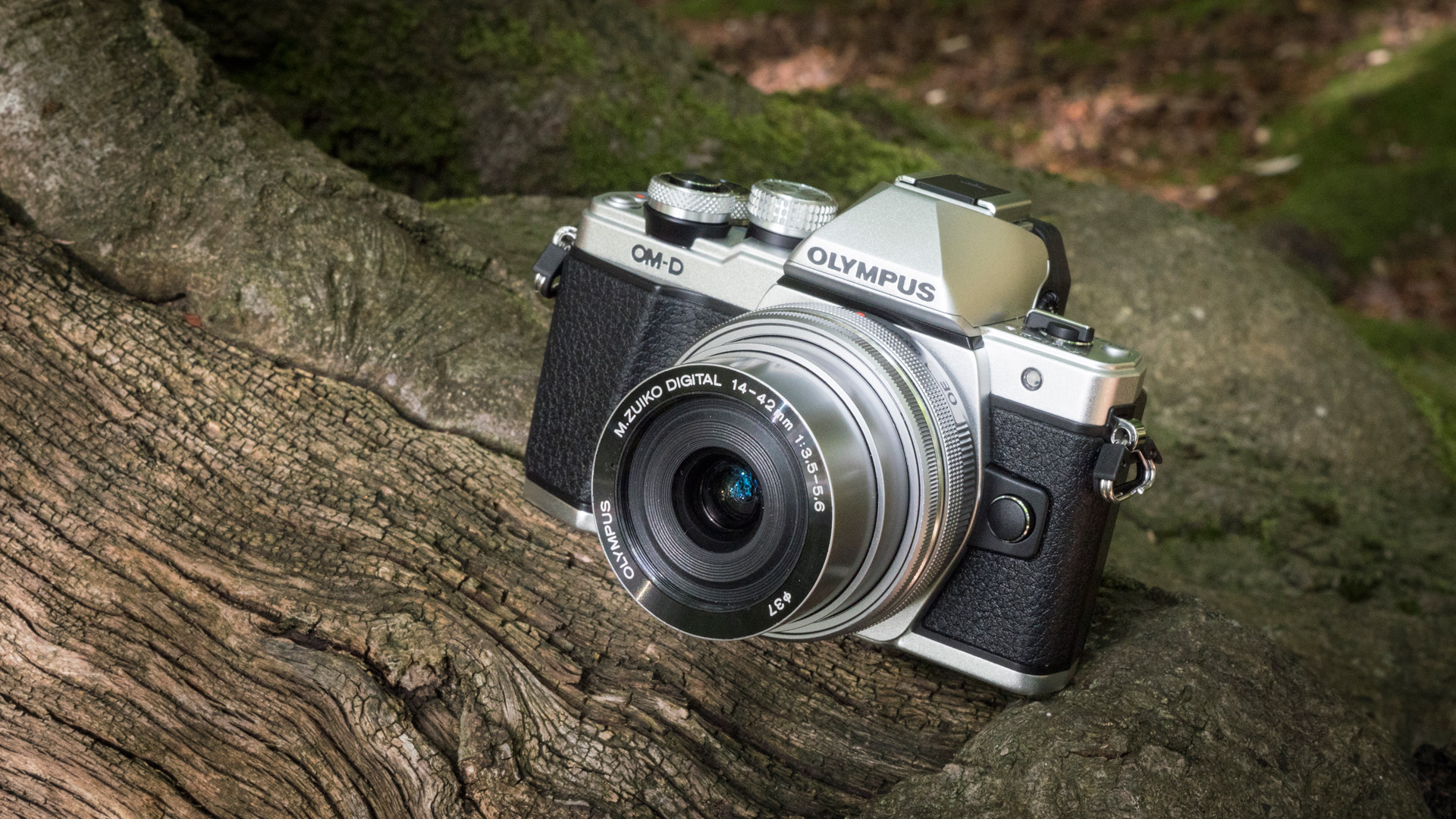Why you can trust TechRadar
This is a test of the camera's noise levels. The higher the signal to noise ratio, the greater the difference in strength between the real image data and random background noise, so the 'cleaner' the image will look. The higher the signal to noise ratio, the better.
Olympus OM-D E-M10 II signal to noise ratio charts

JPEG signal to noise ratio analysis: These results confirm that the E-M10 II strikes a good balance between noise and detail visibility.

Raw (converted to TIFF) signal to noise ratio analysis: The lower scores here indicate that the E-M10 II's raw files reveal a little more noise and, as we have seen from the resolution results, this enables them to record a bit more detail than the simultaneously captured JPEGs.
Sample Olympus OM-D E-M10 II test results
The signal to noise ratio charts use laboratory test equipment, but we also shoot a real-world scene to get a visual indication of the camera's noise levels across the ISO range. The right side of the scene is darkened deliberately because this makes noise more obvious.

ISO 200 (JPEG): Click here for a full-size version.

ISO 6400 (JPEG): Click here for a full-size version.
